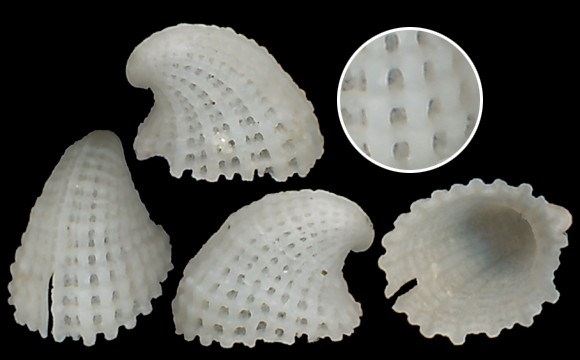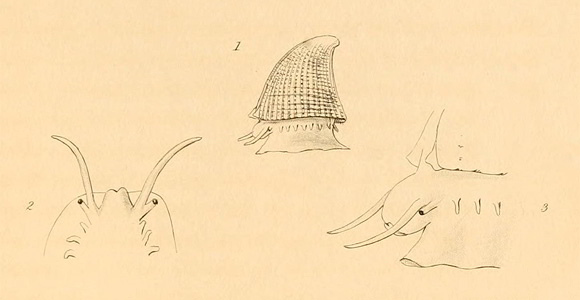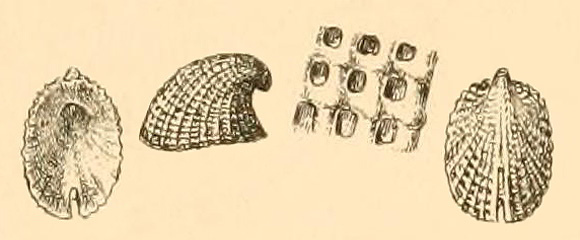
Predator on sessile preys from subtidal grounds to continental shelf. « A common shallow water species along the shores of NW. Europe » (Hoffmann & al., 2011). « Lives on shells and stones. […] Rare » (Taslé, 1866). « This shell is readily distinguished from E. fissura by the greater curvature of the apex, by being at least as high as it is long, and by the delicate rose colour of the inside in the adult. There is a white line within the shell, running from the fissure to the apex, formed by the gradual obliteration of the fissure, as the shell is increased. The animal does not appear to differ from that of E. fissura. Found in Poole harbour, where I took three specimens of different sizes, last autumn, in dredging. » – T. Bell: “Description of a new species of Emarginula”, The Zoological journal vol. I, London 1824, p.52.
Synonyms: capuliformis, conica, pileolus…
200m deep, Estepona, Málaga, Andalucia, S. Spain. 3mm.

« Ribs subgranose or somewhat geniculated; vertex greatly recurved, on a level with, or extdending beyond, the posterior margin; interior occasionally tinged with rose-colour. » – Forbes & Hanley: op. cit. vol. II, London 1853, p.479.

Regarding this rose-colour of the interior: « The beautiful rosy hue of the aperture, from which this species has derived its name, must, we fear, be considered exceptional, rather than otherwise, since, in the majority of individuals, the shell is of a squalid white both within and without. »